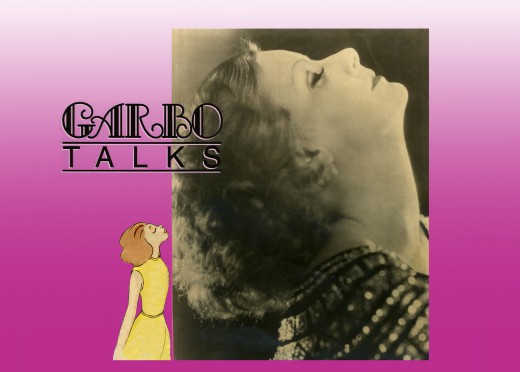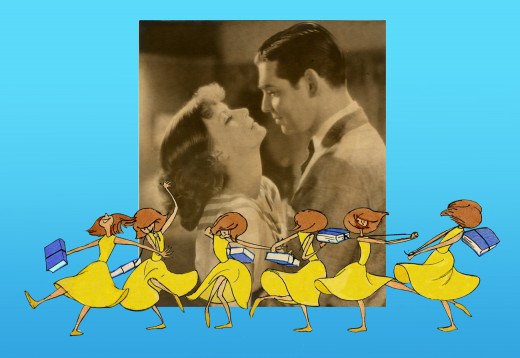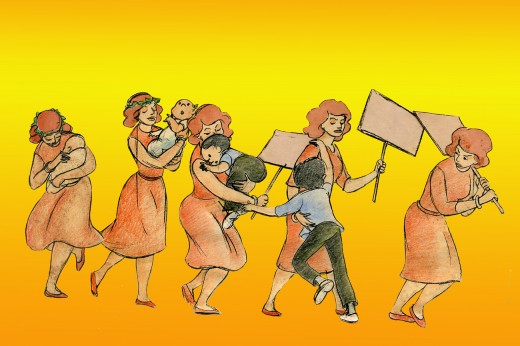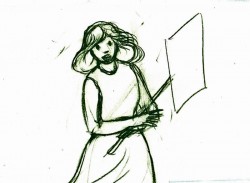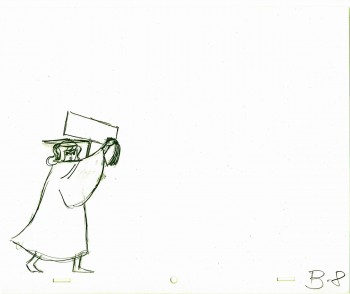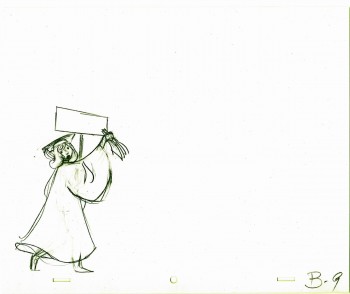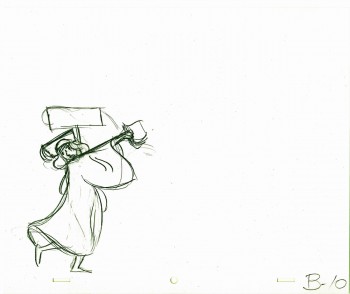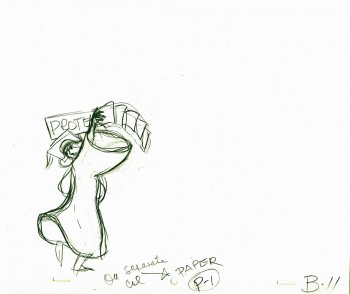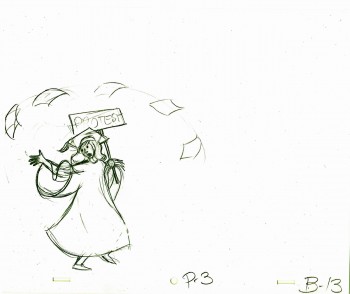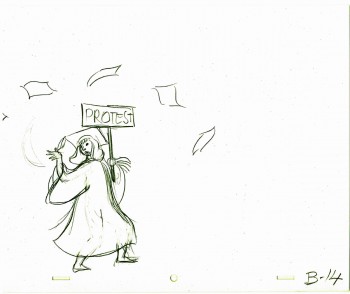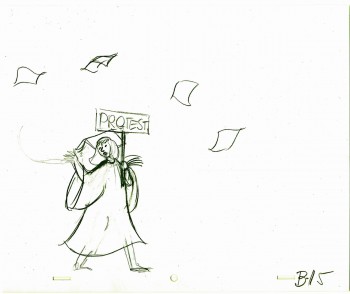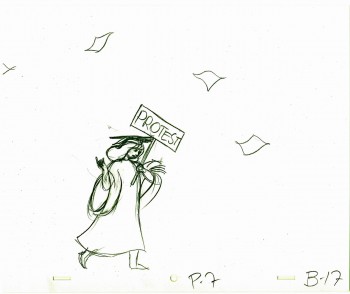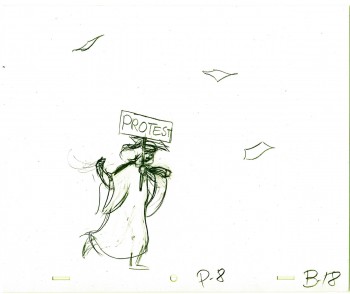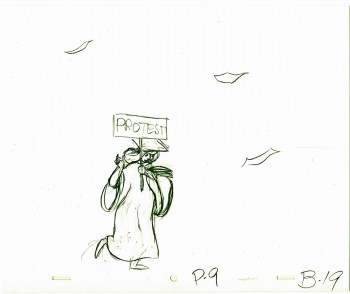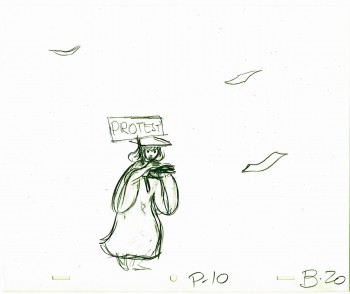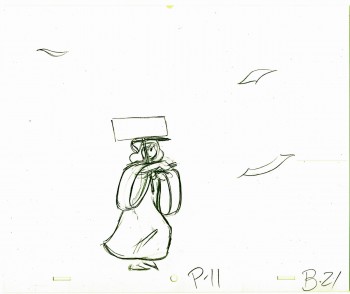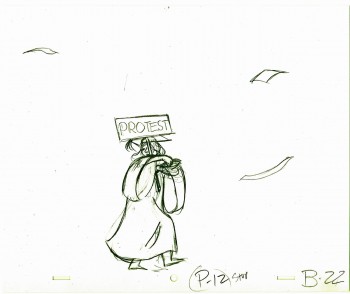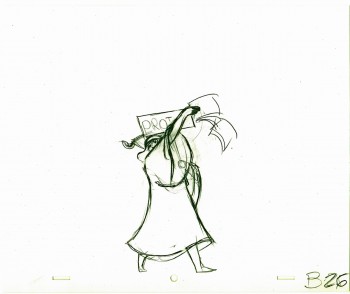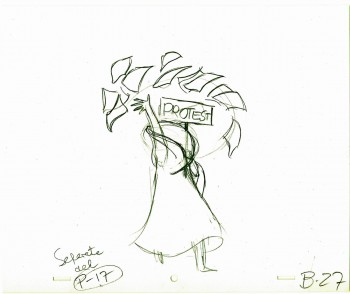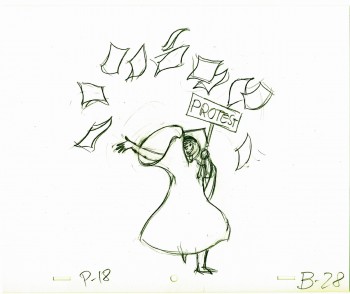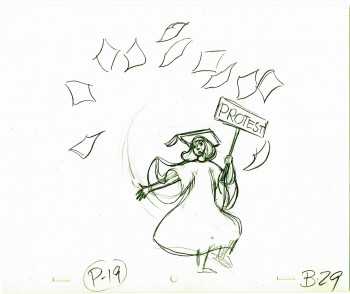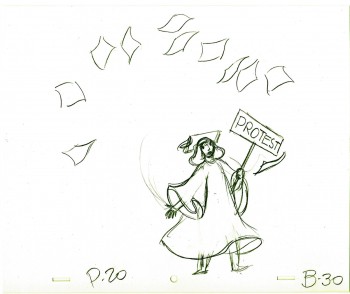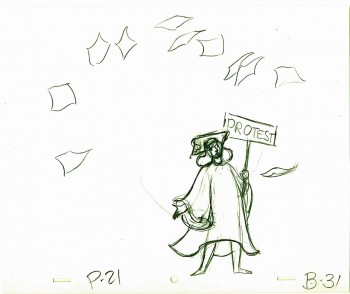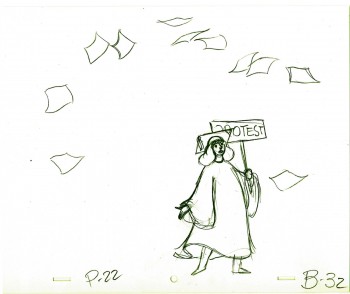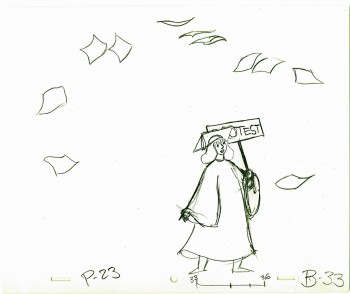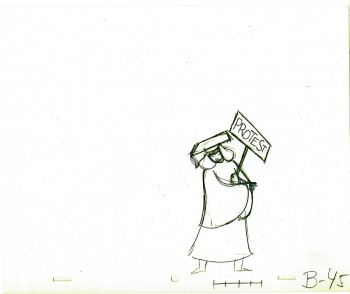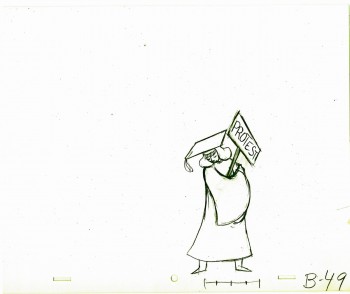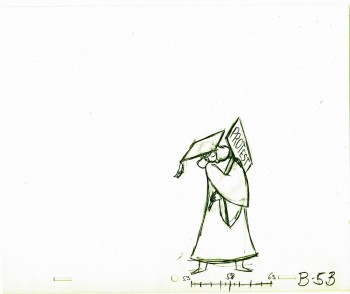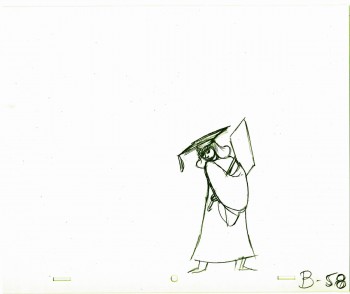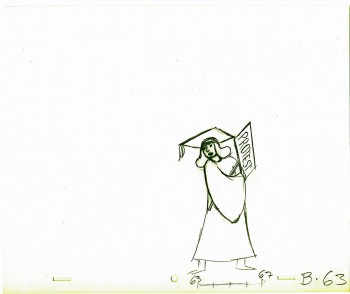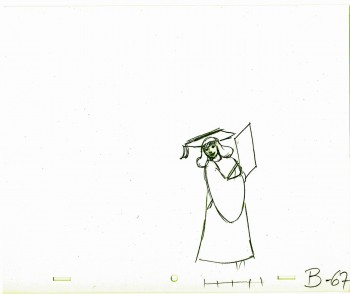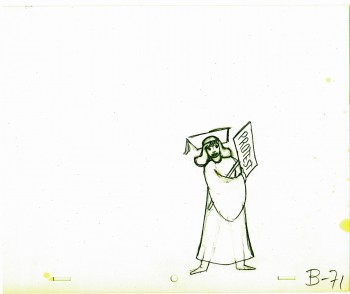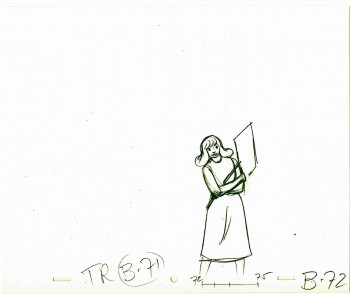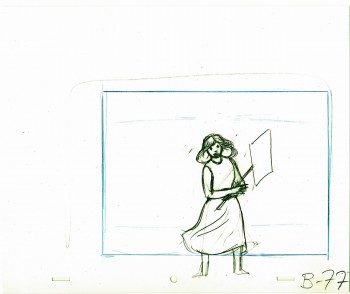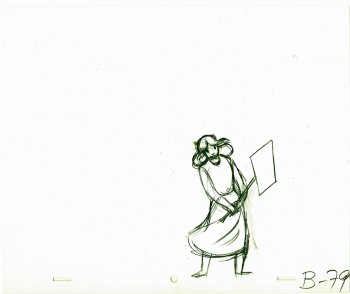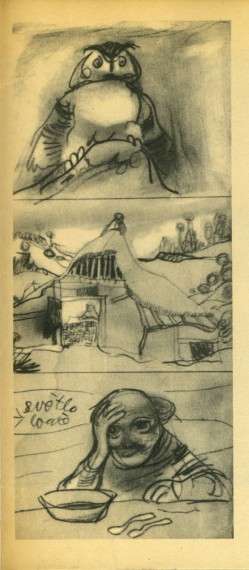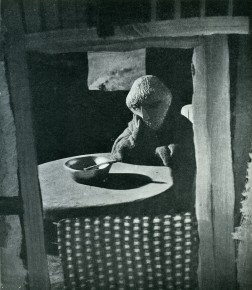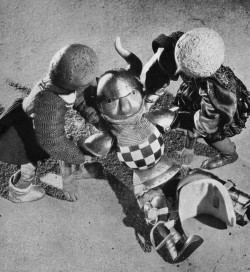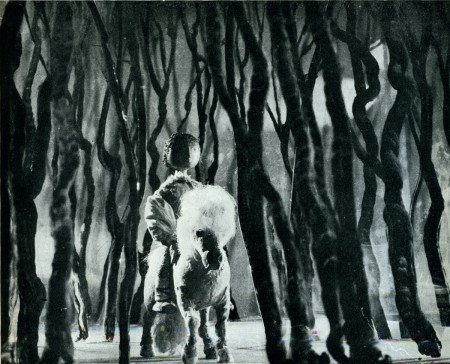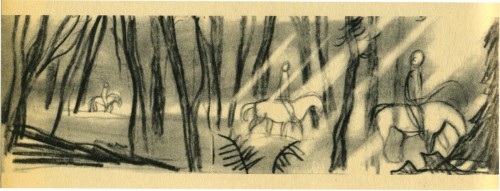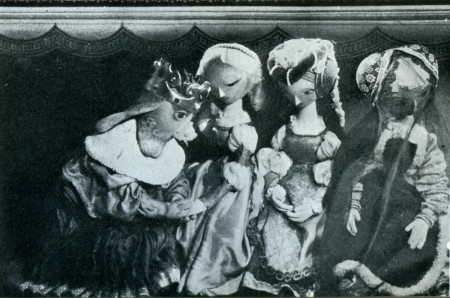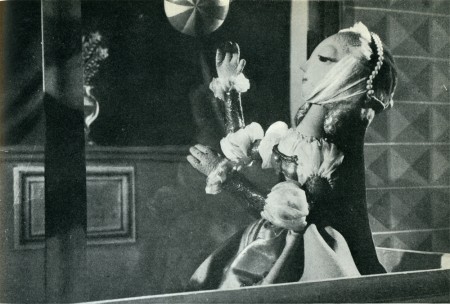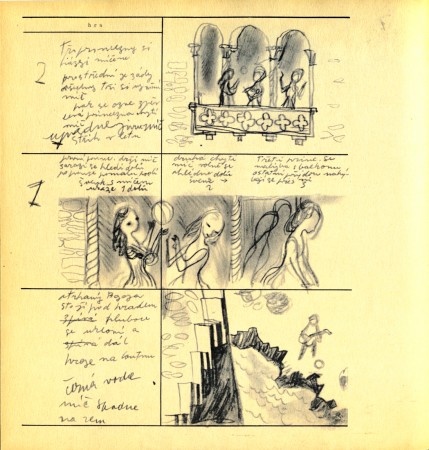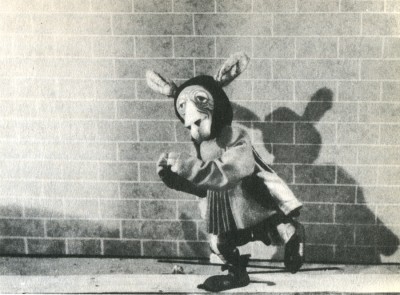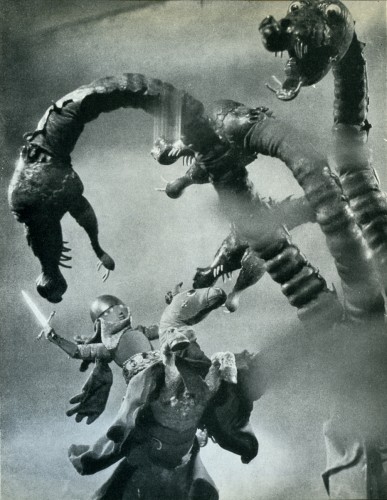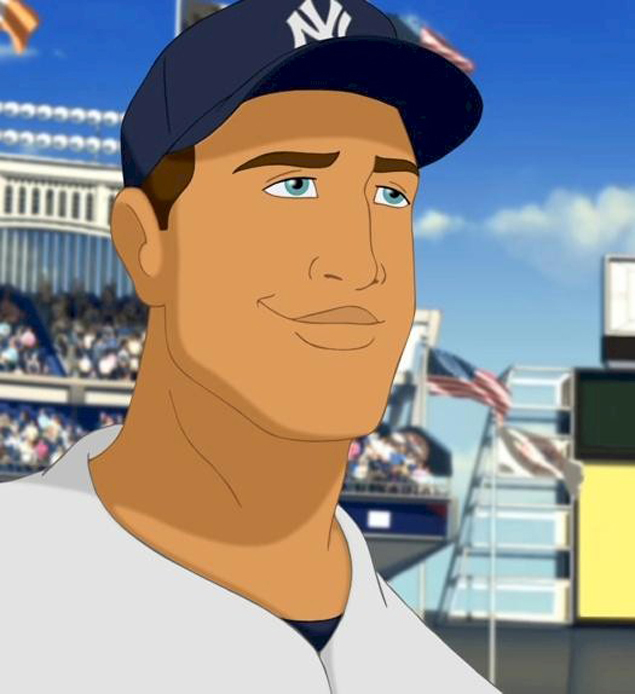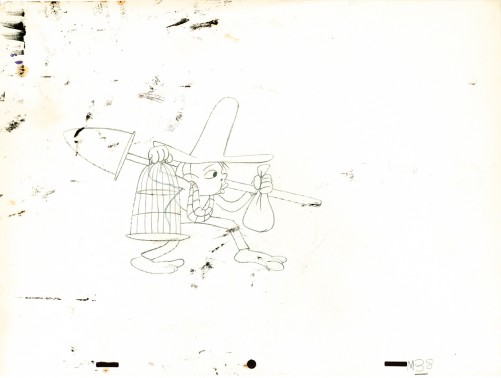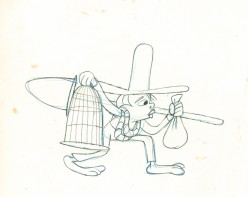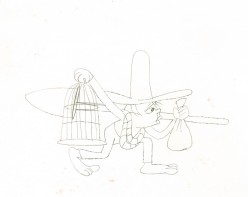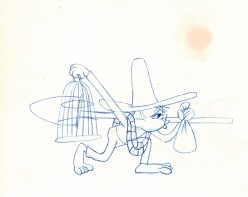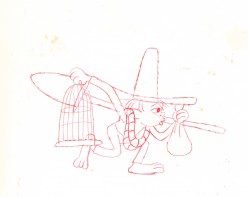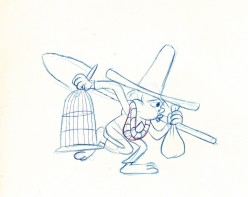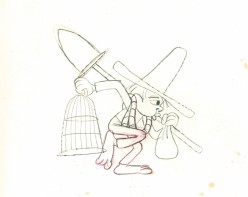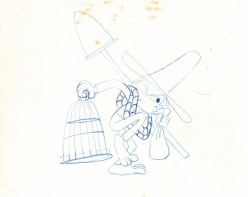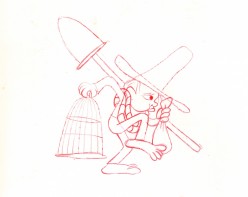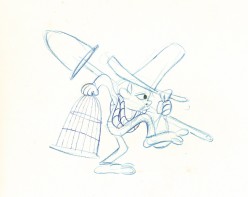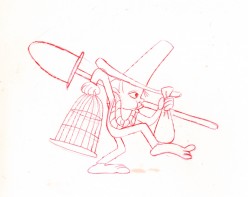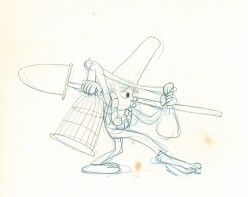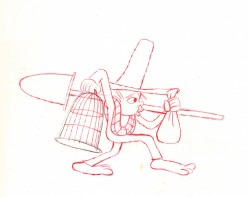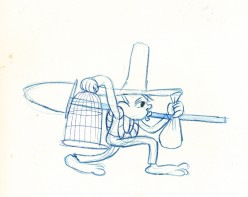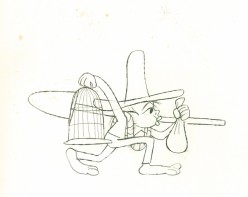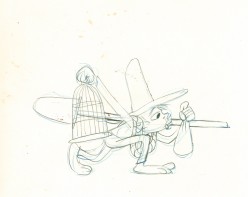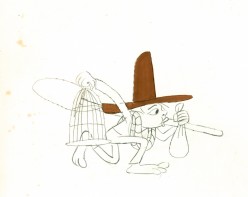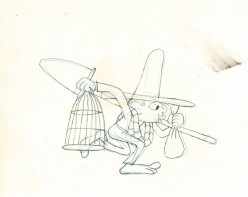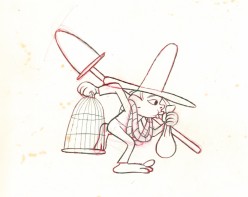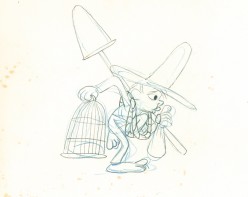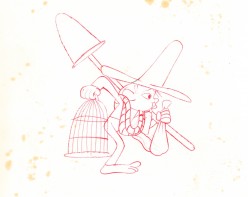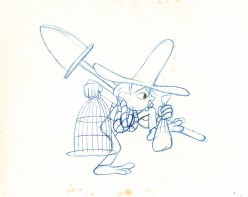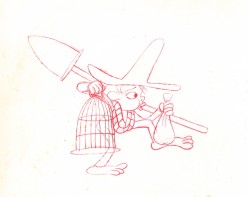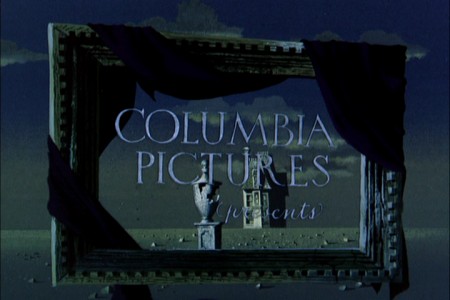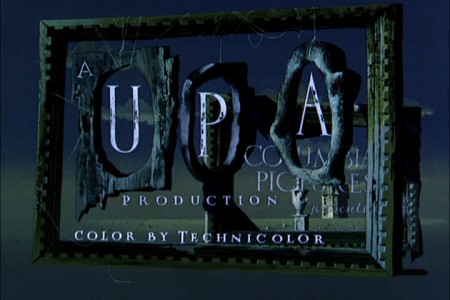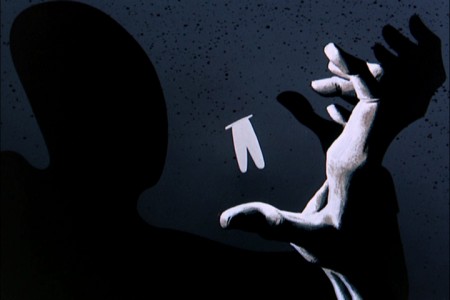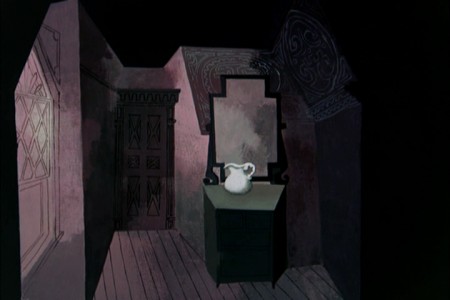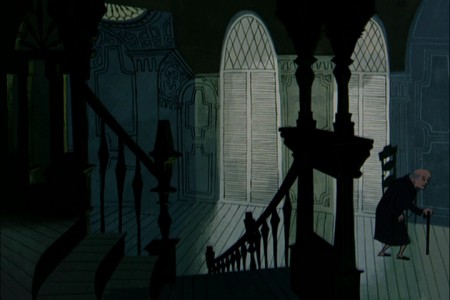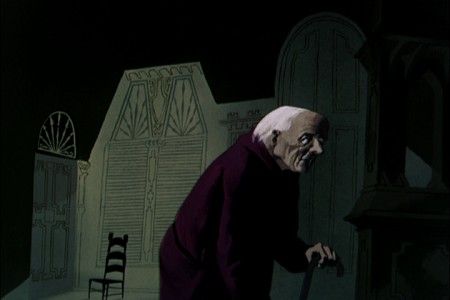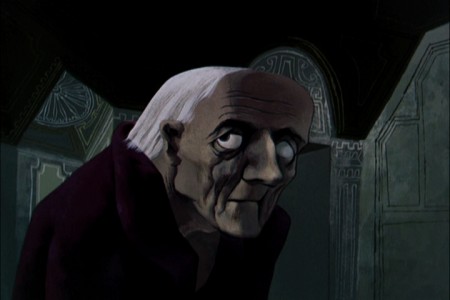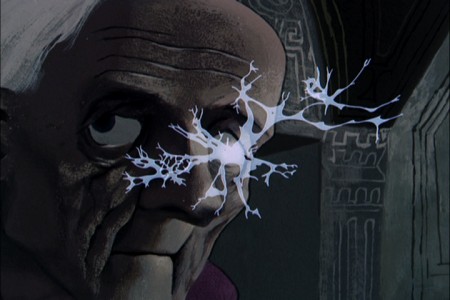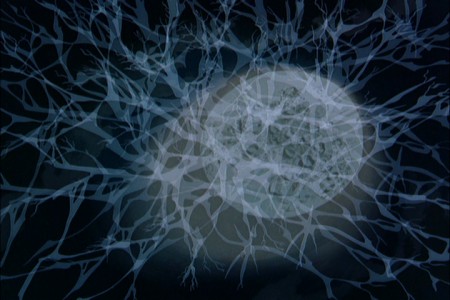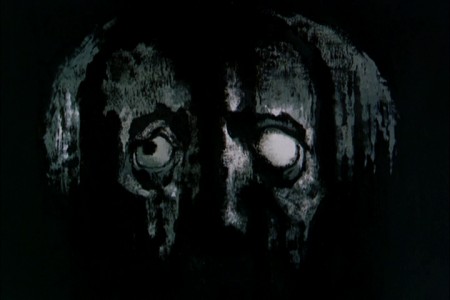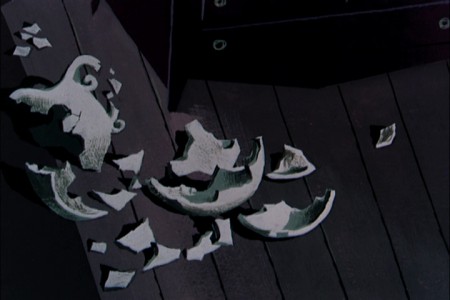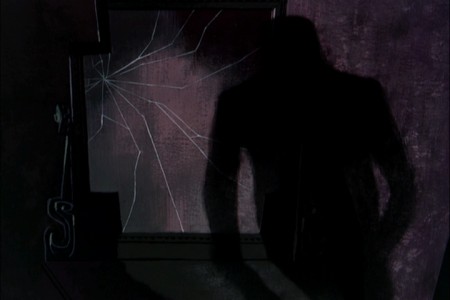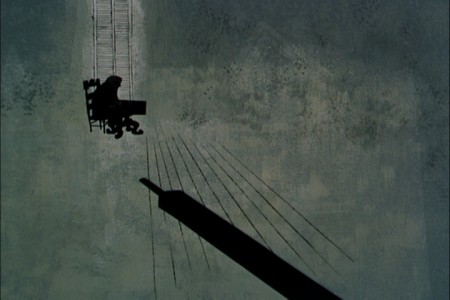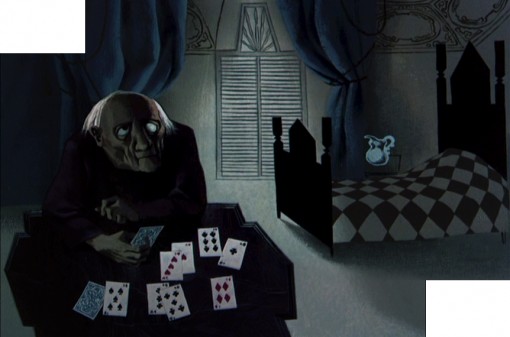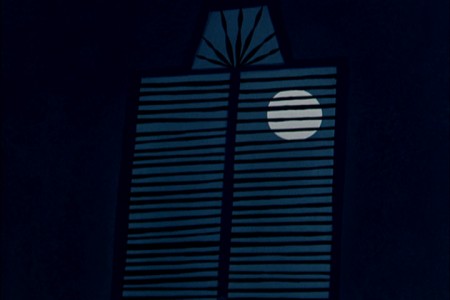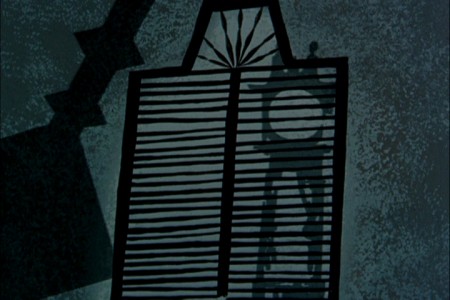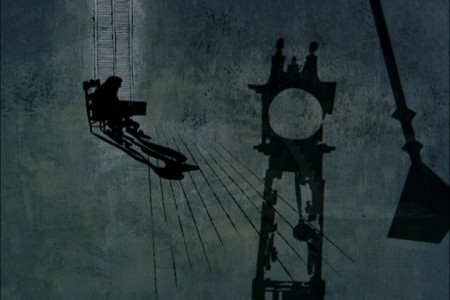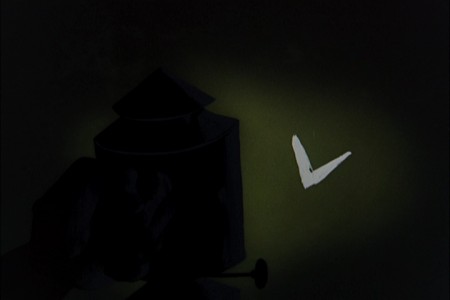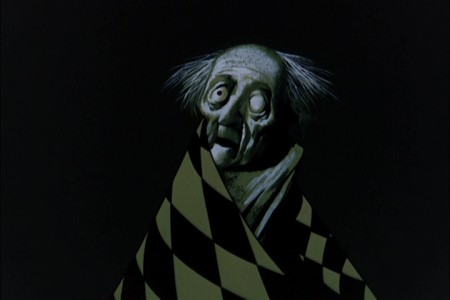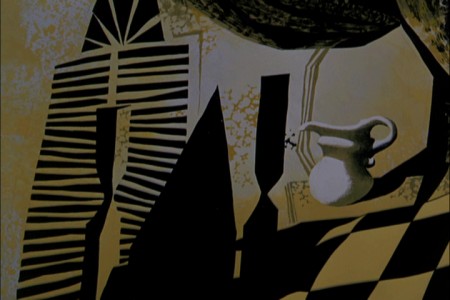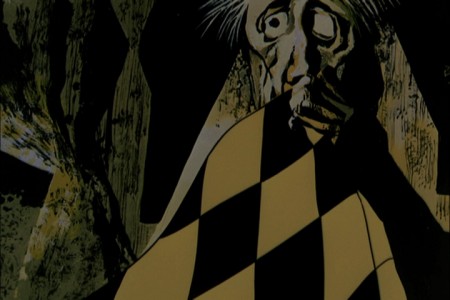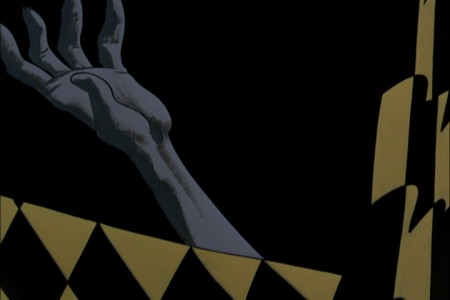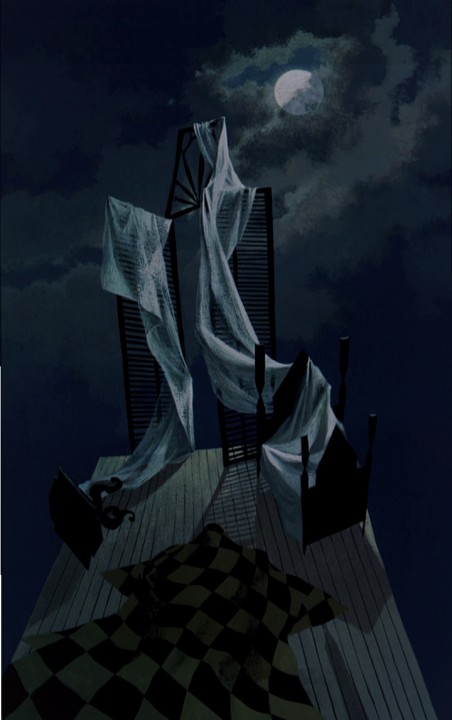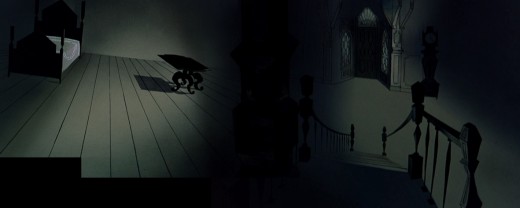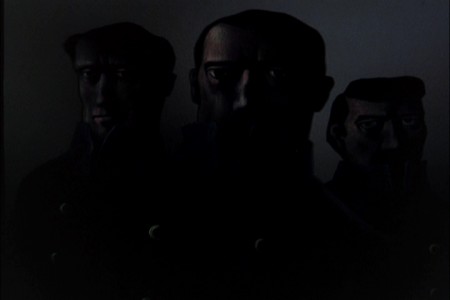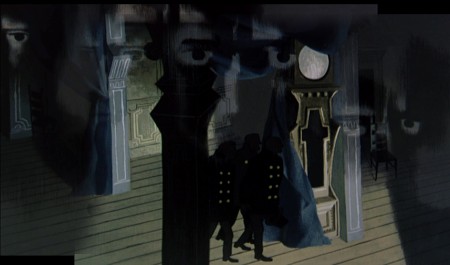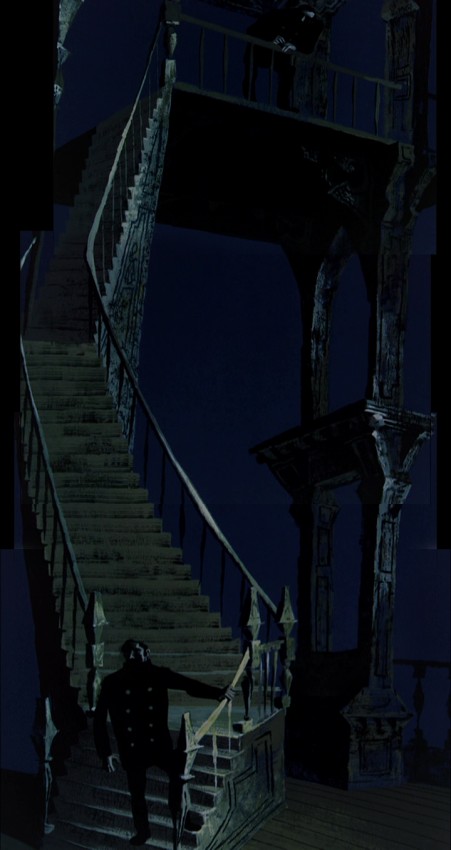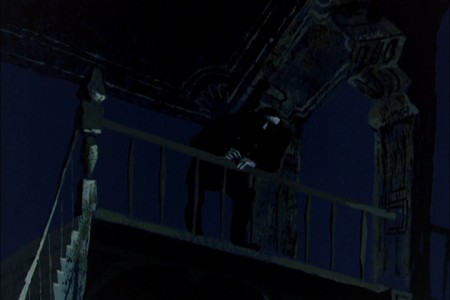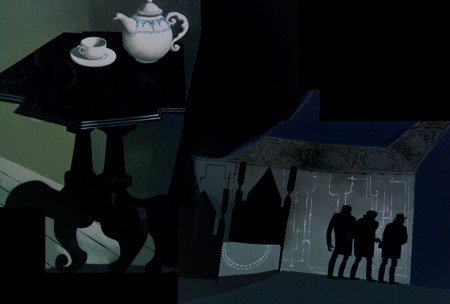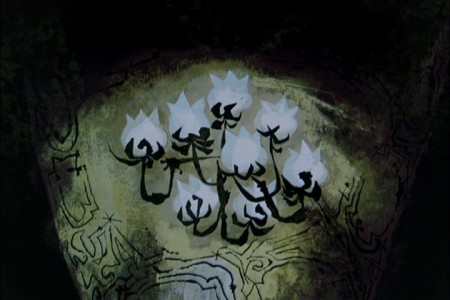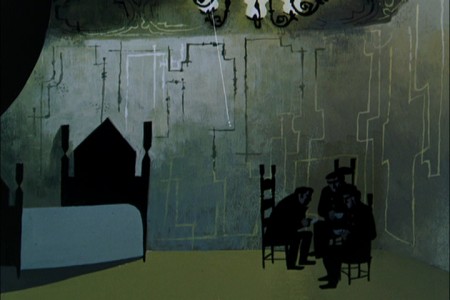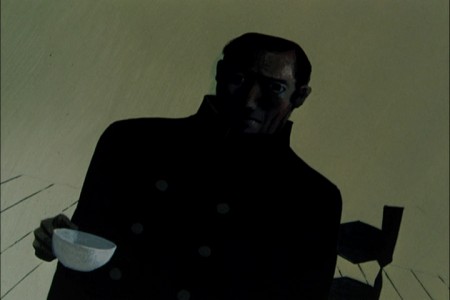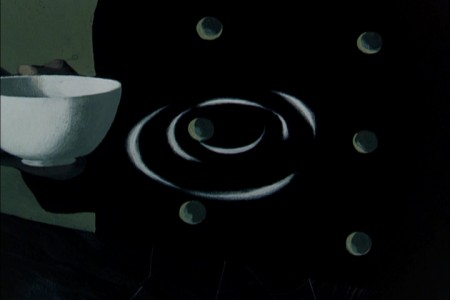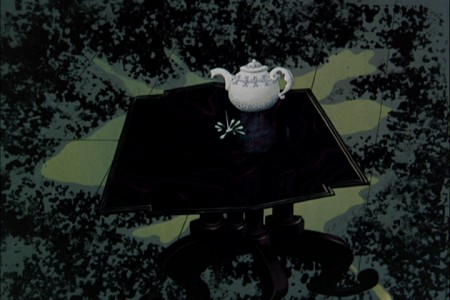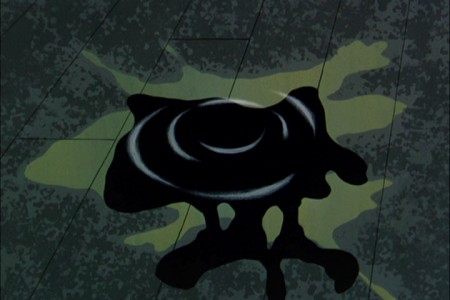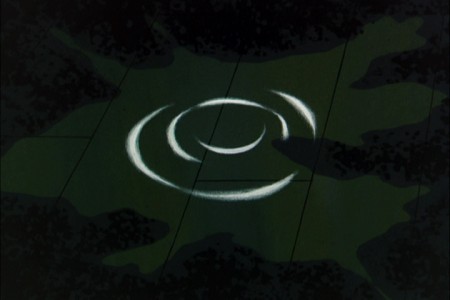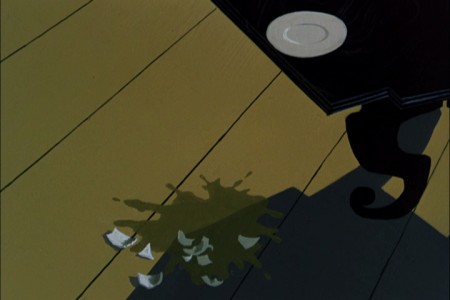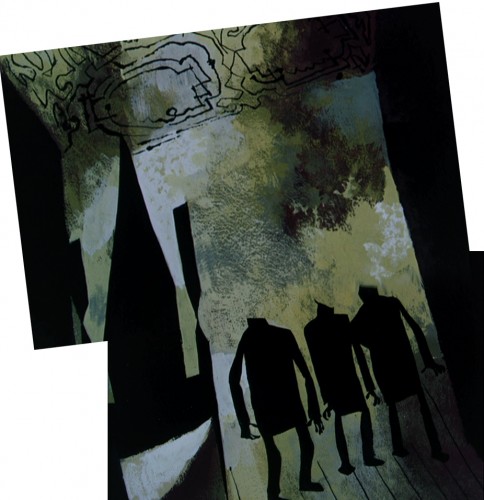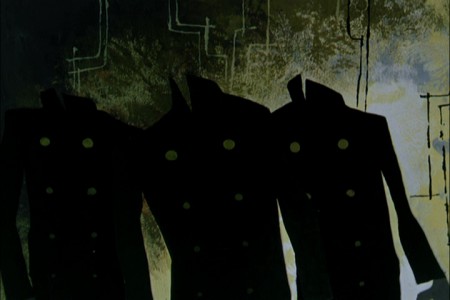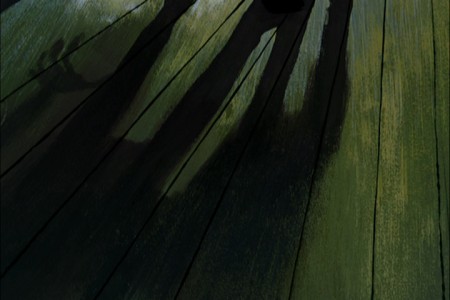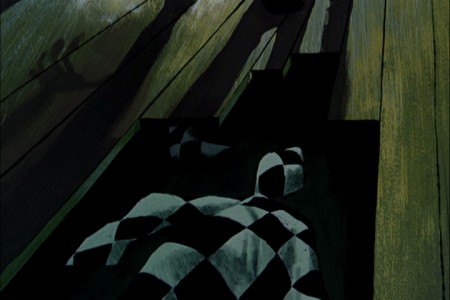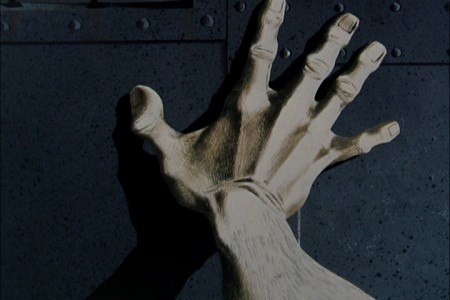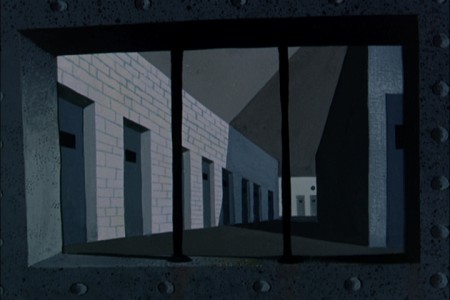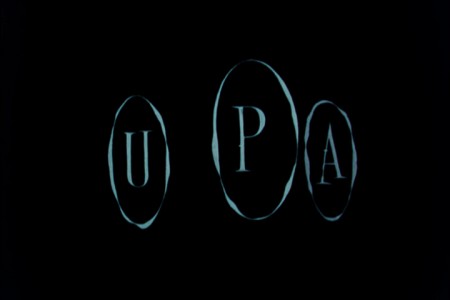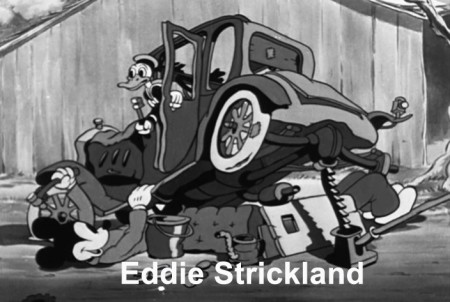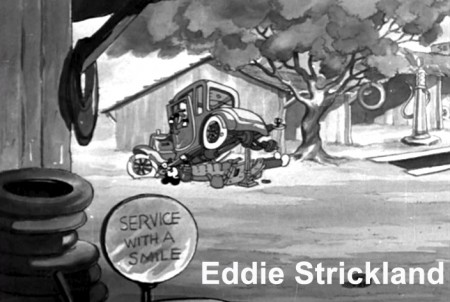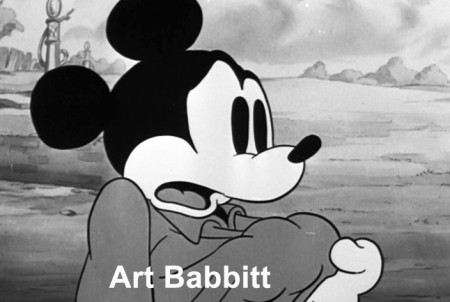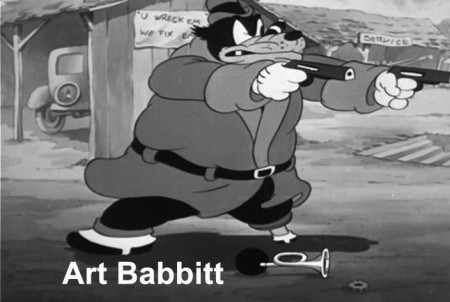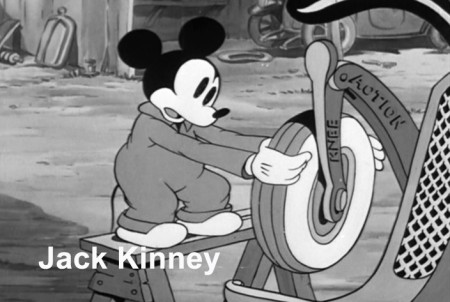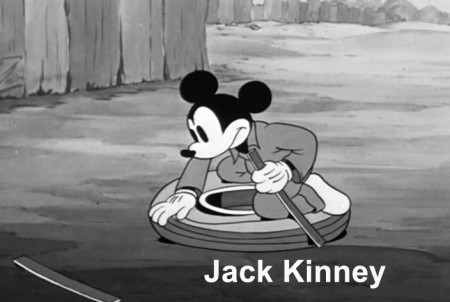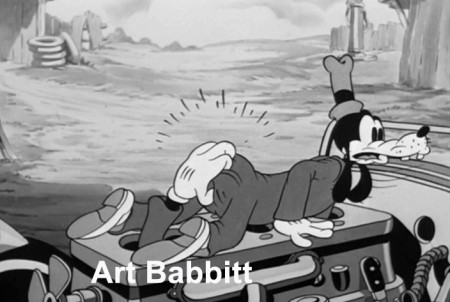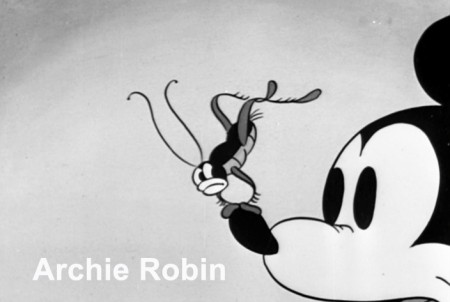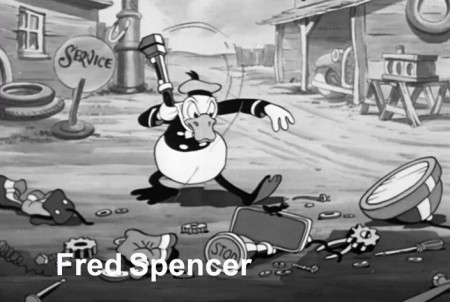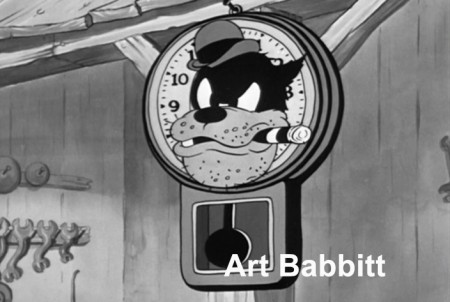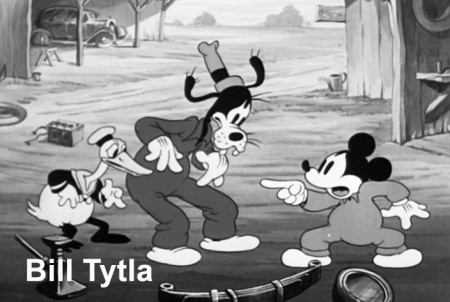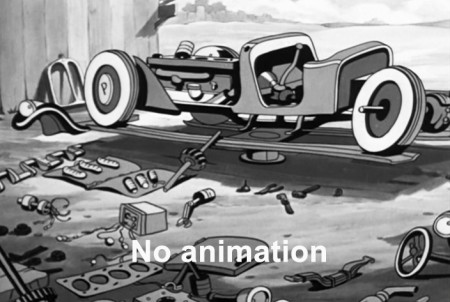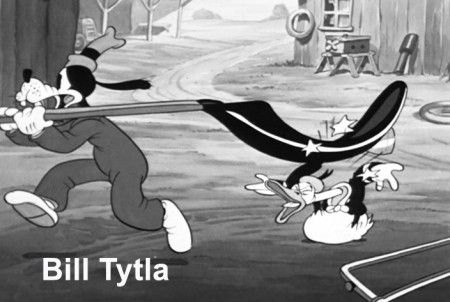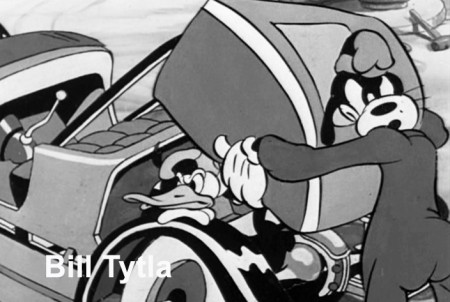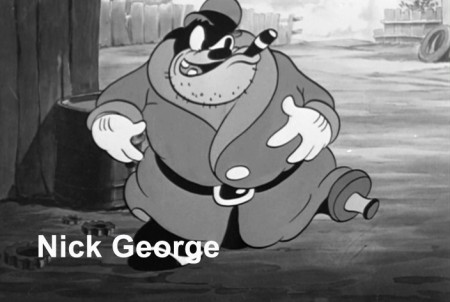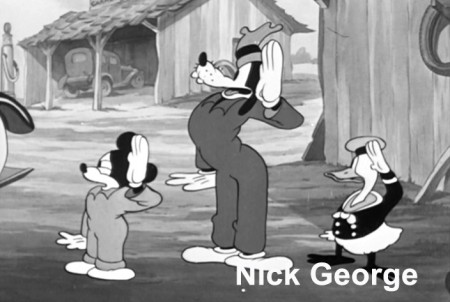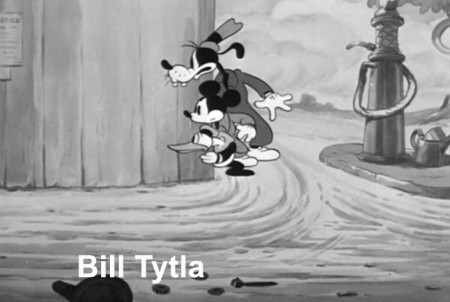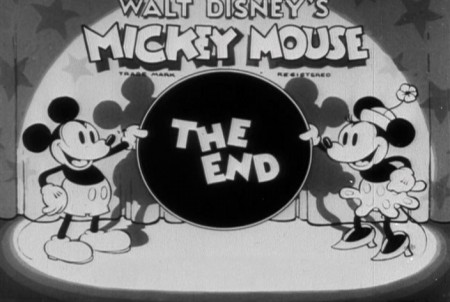Category ArchiveCommentary
Animation &Animation Artifacts &Commentary &commercial animation &SpornFilms &Tissa David 26 Aug 2013 08:54 am
Garbo Talks through Tissa’s Drawings
To celebrate Tissa David‘s last days, Ive chosen this title sequence she did for Garbo Talks. Her anmation is beautiful for it, and I enjoy looking at the film which has yet to be released on DVD.
The initial rough/cut screening for Garbo Talks was a bit peculiar. I sat down and a woman sat next to me; I sort of recognized her. We said hello when she sat down. Somewhere midway during the film I realized who the woman was – Betty Comden, that half of the Comden & Green writing team. I realized she was playing the part of the older Greta Garbo in the film, without receiving credit. It was brilliant casting, but you could say that about all of Sidney Lumet’s movies.
When I left the screening room there was a tense meeting going on with four people. I caught Sidney’s eye and waved goodbye. Going down in the elevator Burtt Harris, the producer, rushed in as the doors were closing. He asked what I thought of the film. Before I answered he said it wasn’t working, and Elliott Kastner and MGM weren’t very happy. A rough conversation in an elevator.
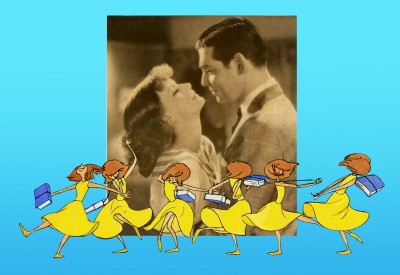
The next day, Sidney asked what I thought of the film, I said that I felt we didn’t know enough of the back story of the Ann Bancroft character in the film. I suggested that I try to offer this in the opening credit sequence. Sidney loved the idea. He just made me promise that it wouldn’t feel like the credits to “I Love Lucy” or “I Dream of Jeannie.”
During the mix, we were talking about the music for Garbo Talks when we slipped off into discussing the music for some of Sidney’s other films. I told him that the music by Richard Rodney Bennet for Murder on the Orient Express was one of the most brilliant film scores ever done. Sidney hesitated in responding finally saying he didn’t get it at first, and it took a while for him to appreciate the music for that film. Sidney wasn’t always perfect in selecting a composer for his films, although I do think that Johnny Mandel was a great choice for him on Deathtrap and The Verdict (or any film, actually).
Bob James had scored Garbo Talks. (He is an eminent jazz pianist, whose most famous piece is probably the theme to the tv show, Taxi.) Bob and I had to work together very closely. He wrote the score to the animatic I’d given him and would build the rest of the film’s score from that. He hit many of the actions in that opening title, and Tissa David‘s animation hit them all. There was a very tight sync between music and title animation.
The preview screening was held on Long Island. I drove there and met the group of Sidney, editors and MGM execs, including Elliott Kastner. He was the leading producer on the film. They weren’t happy at the end of the screening, and I was sure my titles were going to go. It took a week to hear that the titles were staying, but the score by Bob James was dropped. The composer took the hit, unfairly. A new score was being written by Cy Coleman. All that tight sync work!
Coleman wrote a lovely melody for the film, but just swept across the animation not hitting any points in particular. It’s taken me a long time, but I’ve come to like the music he wrote. Tissa wouldn’t watch the piece again with the new music.
In the film, the character played by Ann Bancroft has had a life that, in some small way, was shaped by Greta Garbo’s feature films. This is a small bit of backstory in the live action film, until the end.
For the credits, I chose to develop this aspect of her story, and Sidney agreed on the approach. We told her life in a caricature of Ann Bancroft‘s character, growing up. The sequence ends with her at her current age, an elderly woman, and the live action begins. Hence, we were giving the life story of the film’s lead character before the film started.
The idea was to use the device that had been developed for TV in the 50′s & 60′s of the caricatured characters whisking through the sitcom titles. (See Bewitched or The Carol Burnett Show.) However, it was our intent to treat it in a serious way.
Tissa David did a stunning, tour de force of a brilliant piece of animation. It was a dance that the character went through, and the credits played off the animation, which played off stills of Greta Garbo’s films.
There was a small crew on the piece, which ran about 2 ½ minutes. Tissa animated, I did whatever clean up was left. Robert Marianetti single-handedly colored everything; Janet Benn and Christine O’Neill did additional I&P. Gary Becker filmed it, and Edith Hustead edited.
.
.
Tissa had about two weeks to animate about 2½ mins. of animation. I begged her to leave inbetweens for me, which she did, though only on close positions. I inked on paper, and Robert Marianetti colored directly from these rough-ish drawings. It was done with prismacolor pencils on paper. The paper drawings were then cut out and pasted to cels.
.
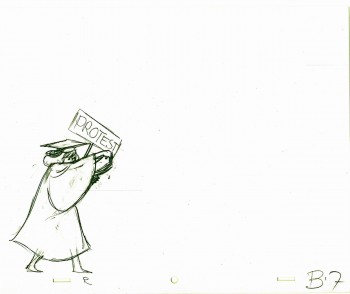 7
7
(Click any image to enlarge.)
Below is a rough PT of the piece with its staccato rhythm since it’s missing inbetweens.
Garbo Talks ruff PT On twos at 24FPS
Click left side of the black bar to play.
Right side to watch single frame.
The entire title sequence.
Thanks to Roger79 for uploading it.
Thanks to Stephen MacQuignon for finding it.
Animation &Books &Commentary &Puppet Animation &Trnka 20 Aug 2013 02:32 pm
Trnka’s “Bayaya” repost
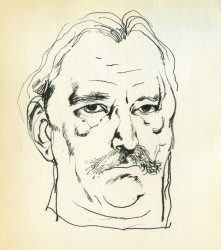 – Early in the history of this blog, I wrote quite a bit about Jiri Trnka. This man’s artwork has long been a source of great inspiration to me. His illustrations for the fairy tales of Grimm and Andersen are stunning and the two books are of inestimable value to me. His puppet films are so brilliantly strong and lyrically beautiful that I was overwhelmed when I first saw them, even though his reputation preceded them. I’d read enough about him and owned a magnificent biographical account of his work, that I was confident I would be a bit disappointed when I finally saw the films. I wasn’t.
– Early in the history of this blog, I wrote quite a bit about Jiri Trnka. This man’s artwork has long been a source of great inspiration to me. His illustrations for the fairy tales of Grimm and Andersen are stunning and the two books are of inestimable value to me. His puppet films are so brilliantly strong and lyrically beautiful that I was overwhelmed when I first saw them, even though his reputation preceded them. I’d read enough about him and owned a magnificent biographical account of his work, that I was confident I would be a bit disappointed when I finally saw the films. I wasn’t.
The Hand was magnificent and remains one of my favorite films, to this day.
The Archangel Gabriel and Mother Goose is a beautiful animated puppet film about Venice during the late Middle Ages.
The Midsummer Night’s Dream is a feature-length masterwork that has to be seen for any lover of animation – nevermind puppet animation.
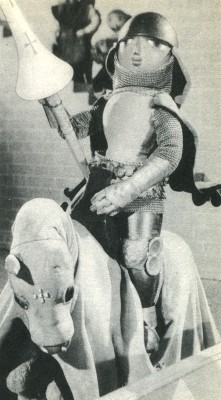 The film, Bayaya was a mystery to me for many years. It was not an easy film to view. Back in the 70s, there was no video, and seeing Trnka’s films meant trips to the NYPublic Library in NY to visit their collection of 16mm films. There you could watch any of the collection or borrow them to watch at home. These films were often littered with many bad splices where the films had broken. The quality of the colors deteriorated over the years. It made for tough viewing, but it also made it possible to see some of the Trnka canon.
The film, Bayaya was a mystery to me for many years. It was not an easy film to view. Back in the 70s, there was no video, and seeing Trnka’s films meant trips to the NYPublic Library in NY to visit their collection of 16mm films. There you could watch any of the collection or borrow them to watch at home. These films were often littered with many bad splices where the films had broken. The quality of the colors deteriorated over the years. It made for tough viewing, but it also made it possible to see some of the Trnka canon.
Bayaya was not part of this collection. In fact, I’ve only seen part of the film once. John Gati, a NY puppet animator who was a good friend, located a copy of a 20 min excerpt (in Czechoslovakian) for an ASIFA-East screening and showed it to a small audience in a classroom at NYU. The print was black and white, but since I’d only seen B&W illustrations, this made sense.
This film represented a strong change for Trnka. He had previously done a number of cel animated films. These shorts were remarkable in that they were a strong step away from the Disney mold. This was a bold step to take in the animation community in Europe circa 1947.
The film was purely lyrical, and the story accented the folk tales quality of these legends of Prince Bayaya and The Magic Sword. Consolidating the two, he named the film after the hero and made him the embodiment of courage, morality and honor.
Trnka considered Bayaya a turning point in his career. He realized that the puppet film had taken on new strength and he had to follow through with every film thereafter.
Here are a couple of scenes from the Trnka book I treasure, Jiri Trnka: Artist & Puppet Master.
There are two parts of a documentary on Trnka available via YouTube. They’re worth the watch. Part 1, Part 2.
Commentary 17 Aug 2013 06:40 am
Comments
Comments
Today’s the day for Lou’s funeral. A nice crisp day, no rain. I’m sad enough about his passing, but on top of that I know in my bones that I wouldn’t make it there and back on NYC Transit. I can’t attend without being conspicuous. I’m sad.
We flew into St. Louis on a Friday afternoon prepared to attend a screening of some favorite films chosen from those done in my studio.
The Festival was to present me with an award for being he greatest living animator since Walt Disney (I think that’s what it said), which I planned to accept with all humility.
The one quirk noted, before going to the screening, was that I knew I wasn’t feeling all-too-well. I assumed it’d pass.
Cliff Froehlich, the festival’s director presented the award which highlighted my all-enveloping passion for Edgar Allan Poe, or at least the animated biography I’ve been trying to put together. For the award, an artist had drawn Poe as the likeness of Vincent Price. The connection, in reality, is remote, but it was a funny idea.
For the four hour workshop on Saturday, we broke down all the elements of animated film: storyboard, animation, planning and construction. The kids worked off a Jules Feiffer character we’d animated and took it in whatever direction they wanted. However, we sought a completed walk cycle in the end. I’m taking their drawings and transposing it an animated dvd so they have a souvenier of the day in the end.
A full day on Saturday and a fun evening on Saturday night wasn’t the surprise. Other plans, other events and a rush back to a hospital in NY were a surprise. All a very dramatic way to end that Festival program but, ultimately, the ending was a happy one, and here I am writing about the visit.
Thanks St. Louis. You were a good host, and I was made to feel special. I’m just sorry I had to short change the weekend with a nasty health issue. In the end, all really didn’t go that poorly. I’m sorry it caused a lot of people some consternation. It would have been nicer had it been more as planned. I hope I didn’t disappoint too many.
Thanks to all those behind or even in front of the curtain, including Cliff Froehlich, and Sherri Williams, Chris Clark and Kat Touscher and Brian Spath.
Bugs’ Sahara Tale
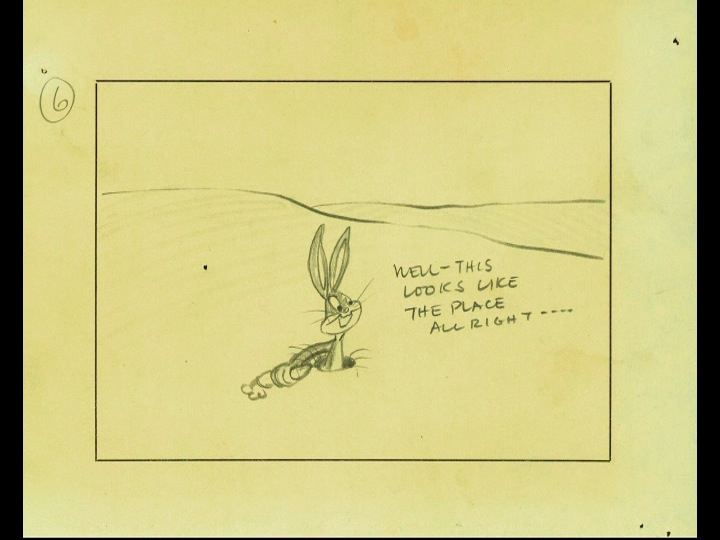 Thad Komorowski‘s What About Thad? blog s by far one of the best to visit. He just currently put up a large part of Freleng and Warren Foster‘s storyboard for the Freleng cartoon, As Thad says at one point, “comparing these boards to the final product is very revealing of how well-crafted and executed even the lesser Warner shorts could be.” A Sahara Tale works as a gem of a board yet is dull as a film.
Thad Komorowski‘s What About Thad? blog s by far one of the best to visit. He just currently put up a large part of Freleng and Warren Foster‘s storyboard for the Freleng cartoon, As Thad says at one point, “comparing these boards to the final product is very revealing of how well-crafted and executed even the lesser Warner shorts could be.” A Sahara Tale works as a gem of a board yet is dull as a film.
Despite the beautiful artwork on display, (taken from DVD extras) you’ll find no love of words for that very same art as Thad pointedly criticizes the cartoon and, therefore, the storyboard. This takes something of a strong constitution, especially when you can view such material up close.
I, of course, see no fault in what Thad’s written, so have to agree with him. However it still doesn’t make it easy to view without slobbering over the art.
These images remind me of the great collection of Alex Lovy drawings Thad posted from Woody’s Ace in the Hole. There was a posting I won’t soon get past. I loved it, loved it, loved it.
These Foster images are beauties, too, it’s just that the short is so damned mediocre. At the very least these imges remind us ow great the art of cartooning how reached at WB< Disney's et. al. during that period. Breathtaking, really.
A-Rod and not Me
An animated film called Henry and Me is in the final stages for the NYYankees. It stars the voices of many of the star-studded team, but changes may be underfoot. Given the negative press Alexander Rodgriguez has brought to his off-the-field drug use, it looks like the producers are going to can his voice over.
- The embattled Yankee third baseman, who voices the animated version of himself in the children’s film “Henry & Me,†will likely find his character on the cutting-room floor because of his involvement in one of baseball’s biggest drug scandals.
The film’s investors will “make a move to get another character†to replace Rodriguez’s, according to executive producer Ray Negron, a long-time adviser to the Yankees, although “they still haven’t pulled the plug yet.â€
During a screening of “Henry & Me†in midtown Wednesday, Rodriguez’s character was still part of the film and its narrative — which chronicles the moving journey of a young boy named Jack, who is battling cancer and who ends up meeting many of the Yankees’ legendary players, as well as the late owner, George Steinbrenner.
Rodriguez comes up to bat during a crucial sequence — sound familiar? — and needs a clutch hit to send the Bombers into the playoffs. The film is based upon Negron’s children’s books. “Win or lose, kid, these are the opportunities we live for,†A-Rod says to Jack before his at-bat.
Rodriguez’s character later visits Jack in the hospital while he is recovering from cancer treatment. The final version of the film will edit out the animated Alex Rodriguez. But despite the animated A-Rod’s positive message and actions during the film, in reality Rodriguez is enmeshed in a performance-enhancing drug scandal, one that has resulted in a 211-game suspension by Major League Baseball. Rodriguez has appealed, and is playing for the
Yankees as the process unfolds.
The “Henry & Me†investors are concerned with Rodriguez’s off-field woes impacting the marketability and image of the film for his character to remain.
Two movies: like all the rest
This week, like most weeks, I saw a number of movies. Most of them in the video format, one film on the big screen.
The film I saw on the big screen, Thursday evening, was Elysium. The film stars Matt Damon, who I have to tell you, has become one of my favorite screen actors. He’s usually convincing in all those run movie/movie parts he takes. He’s a thinking actor and looks brilliant in films like the Bourne series – which he well keeps alive even turning them down. His best films are the thinking films, the small ones that have something to say like his last, Promised Land, a film that narrows in on the problems of gas production, fracking and all. One really leaves the theater discussing the problem Damon wants to present.
But then there’s Elysium. This is a film about the future where there are the haves and the have nots, those who fight for their daily existence while the others fight to keep the average Joes from their sightlines. No real discussion of real problems. The director, Neill Blomkamp, is a South African who gave us the unpleasant futuristic=Alien movie. called District Nine. I hated the first, but only disliked the second film I’d seen by him. (Damon had to have added something.)
But the problem, to me, is something happening to a lot of big budget films. You don’t care about any of the characters on the screen, who don’t seem to really care about each other. I mean, why would we be interested in characters that don’t interrelatel they move at super sonic speeds trying to kill each other. It’s just so exhausting, and makes it difficult to sit there through two hours of noise. You gotta care.
The film I saw on tv – a copy too contrasty on AMC, too many repetitive commercials and about the 12th time I’ve seen the movie – was The Godfather Part 1.
You know, there’s nothing else to say. I just can’t understand why they’ve stopped making films like this – about people (admittedly artificial characters), people you can relate to. They may be thugs and killers and black sheep and awfully artificial with cotton in their mouths, but believe it or not, you can believe them – the characters. It’s story telling of the most basic type, uet it’s ignored for billion dollar chases in robo suits with synthetic music bombarding the annoying soundtrack. I know, it must be that I’m getting old.
I do have to start thinking about what films I’m going to view.
The one to see this year is Blue Jasmine. Now that’s great storytelling. I’ve seen it and plan to see it again next week. Great performances, great characters, great everything else. We go into the heart of Tennessee Williams and deconstruct his great play before realizing we’ve also reconstructed it for the cynical days of now. A great movie that gets to your heart.
Action Analysis &Animation &Animation Artifacts &Commentary &Hubley &repeated posts &walk cycle 02 Aug 2013 04:29 am
Marky’s Walk, cycled
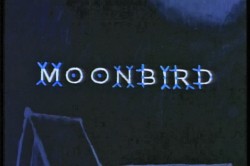 - If I had to choose who was my favorite animator, I’d have a tough time. Equal credit would probably have to go to three different people: Bobe Cannon, Tissa David and Bill Tytla. Jim Tyer and Ed Smith would fall just a smidgen below these three, for me. But there are none like them all, as far as I’m concerned.
- If I had to choose who was my favorite animator, I’d have a tough time. Equal credit would probably have to go to three different people: Bobe Cannon, Tissa David and Bill Tytla. Jim Tyer and Ed Smith would fall just a smidgen below these three, for me. But there are none like them all, as far as I’m concerned.
I’ve posted a lot of drawings from Tissa and Bill Tytla, but have very few drawings by Bobe Cannon (nor have I seen many published anywhere.)
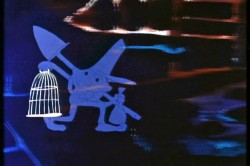 Here is a walk cycle from the beginning of Hubley’s monumental short, Moonbird. The odd numbers are extremes by Cannon, and the inbetweens (even numbers) were done by Ed Smith. Three different sized papers were used for this, and you can view them full sized if you click the thumbnails.
Here is a walk cycle from the beginning of Hubley’s monumental short, Moonbird. The odd numbers are extremes by Cannon, and the inbetweens (even numbers) were done by Ed Smith. Three different sized papers were used for this, and you can view them full sized if you click the thumbnails.
You’ll notice there’s paint all over the drawings. The ink & paint involved tracing the drawing, then using oil paints to cover all of the clear area in black. Some of that paint seeped onto the originals. In one drawing even to coloring the hat accidentally.
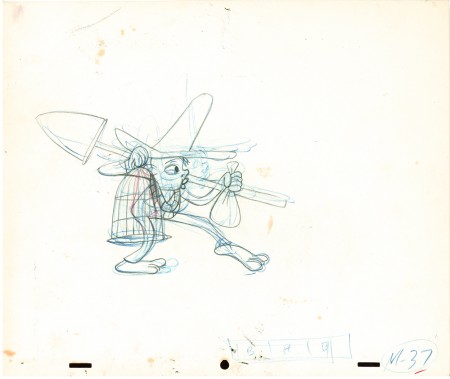 37
37(Click any image to enlarge.) “Marky” walk cycle from Moonbird
On twos at 24FPS
Click left side of the black bar to play.
Right side to watch single frame.
There’s a lot more to this scene including several variants on the walk.
At some future time, I’ll add the other drawings to show off the entire scene.
Commentary &Independent Animation 30 Jul 2013 02:08 am
Sunday Disappointment & Tuesday Les Blank
- I have to admit I was more than a litte disappointed with the program held this past Sunday in Brooklyn.BAM Cinematek hosted a program of anmated shorts that head won the Oscar for animation back in the 60′s. It was an ineresting idea for a program and was pulled together by the indomitable Jerry Beck.
The films included he following list of thoughtful films:
- Munro from Feiffer’s book as directed by Gene Deitch (1960).
Ersatz from Eastern Europe’s Zagreb film as directed (in a slow-moving, sexist way) by Dusan Vuctic (1961).
The Hole whcih has alsways seemed a bit overlong to me, as directed by John Hubley (1962). There is no lack for creativity in this film, though, and I have to give full credit where it’s due.
The Pink Phink didn’t have the same lustre that the original film titles had, and it wasn’t the most exciting pilot to reach the theaters as directed by Friz Freleng & Hawley Pratt (1964). It remains the dud it was, although the two Richard Williams directed title sequences make up for it.
Herb Alpert & The Tijuana Brass Double Feature as directed by John Hubley had a lot of life even in the dated score. The marker drawn non-cel approach made it seem young.
The Box directed by Freddy Wolf was the slimmest of all the films despite its long, slow, 60-ish pace. (1967)
The program was moderated by Jerry Beck. Things started off with his comments trying to get us to open up about the wit of some of the films (as opposed to what was being done by studios at the time.)
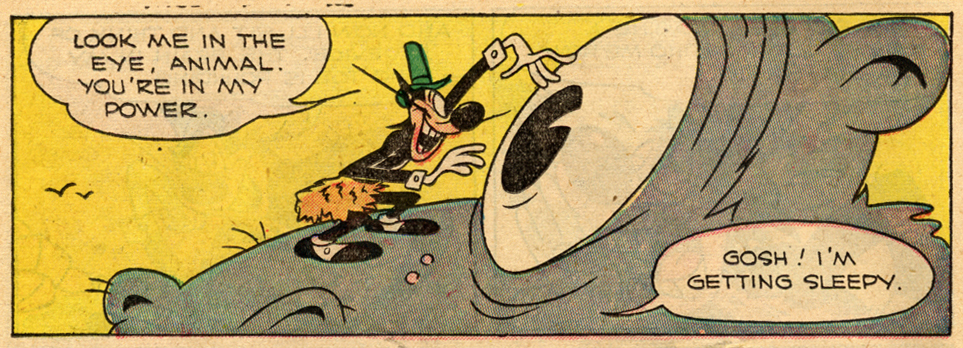 No one else in the room seemed to know that for the first time the animators were ordereed – via Academy rules – to have to view all of hose entered in the program. Prior to that all 4000 employees of MGM or 3500 emploees of WB were pushed to vote for their studio’s film – and they did. This made for a sad list of mediocre winners. When Knighty Night Bugs or The Three Mousketeers wins the Oscar, something’s wrong. It’s even more obvious when a couple of Terrytoons are on the ballot.
No one else in the room seemed to know that for the first time the animators were ordereed – via Academy rules – to have to view all of hose entered in the program. Prior to that all 4000 employees of MGM or 3500 emploees of WB were pushed to vote for their studio’s film – and they did. This made for a sad list of mediocre winners. When Knighty Night Bugs or The Three Mousketeers wins the Oscar, something’s wrong. It’s even more obvious when a couple of Terrytoons are on the ballot.
The panel to discuss the program included J.J.Sedelmaier (who aditted to only having seen three of the winners), Emily Hubley (who probably saw as many of the shorts as I had, and I who was wrong in thinking I hadn’t seen The Box. I’d seen it twice (plenty enough times) before. That ruling, however, meant quite a few changes with strong and important films nominated and winning. There were the occasional slug such as “The Crunch Bird”, but many a good film filed past muster deservedly. Only in these latter days of more recent cgi films have duds gotten back into the voting.
The screening will be at the Light House where an admission will be charged: $3.00 for members, $5.00 for non-members. These are all dedicated art films and will have few showings beyond this weeks’ programs. His art is worth the effort, and it’s thankful to the Academy (particularly Patrick Harrison for taking that effort in making these available to us.)
(Don’t forget that he’s the guy who got Werner Herzog to eat his shoe – all by way of getting Erroll Morris’ shoe some well-worn attention.)
Commentary &Hubley &Illustration &Models &Story & Storyboards 26 Jul 2013 05:06 am
Telltale Hearts Anew
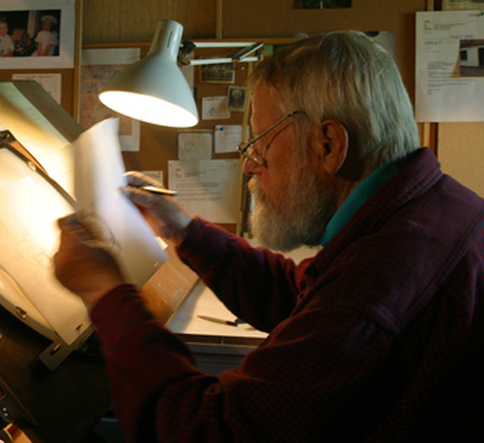 - In at least a half dozen posts I’ve written about Paul Julian‘s magnificent work. Of all of it, The Telltale Heart is probably the richest and most sophisticated of all of this artwork. Such a magnificent artist he was, bordering the realist with the surrealist. I love the man’s work and will continue to feature many of the pleasures he’s given me.
- In at least a half dozen posts I’ve written about Paul Julian‘s magnificent work. Of all of it, The Telltale Heart is probably the richest and most sophisticated of all of this artwork. Such a magnificent artist he was, bordering the realist with the surrealist. I love the man’s work and will continue to feature many of the pleasures he’s given me.
When the Jolly Frolics UPA DVDs were released, there were several films by Mr. Julian that I took great pleasure in analyzing, taking apart and studying anew. How appropriate that John Hubley, my all time favorite, brought the sophisticated Paul Julian into the studio to get him to paint with such elan.
This week, a surrealist one for me if ever there were one, between Verizon’s ample attacks on my phone and blog and the amazingly disturbing hernia operations thrown at me – just for the heck of it – by a brilliant surgeon from India who has worked well in New York City.
It was added b a delightful letter from Borge Ring, by way of his wife, Joanika. The letter prompts a good reason for my posting again the magnificent Julian artwork. I hope you enjoy it, but it’s posted more for my own amusement than yours. Don’t get me wrong, I really hope you enjoy it as much as I do.
Here, then, is the great anecdote b way of Borg:
- hi MICHAEL
Paul Julian’s “Telltale Heart” was shown at Annecy in the sixties. Some0ne asked
producer Les Goldman:
“How long did it take to make the film”?
“It took a year. A year for Paul to paint the film and a year for me to beg the
money together”
cheers
Borge
- Of all the pleasures I’ve gotten from the recently released UPA dvd Jolly Frolics the Backgrounds of Paul Julian are a particular enjoyment. His most famous and greatest achievement is, of course, the work he did on The Tell Tale Heart. This is his film. Ted Parmelee directed it, but I’m certain that he pretty much set the camera moves and timing, leaving all the design work for Julian.
The Tell Tale Heart is a tour de force of production design. It is probably one of the first non-war/propaganda animated films, since Baby Weems, to so feature this element of production over everything else – except story. Paul Julian‘s brilliant artwork oozes from the pores of every frame of this film. Together with James Mason‘s narration and Boris Kremenliev‘s strong musical score, the film evocatively tells the strong Edgar Allan Poe story. This tale has not been told on film any better since it was made in 1953. Ted Parmalee directed the film with authority.
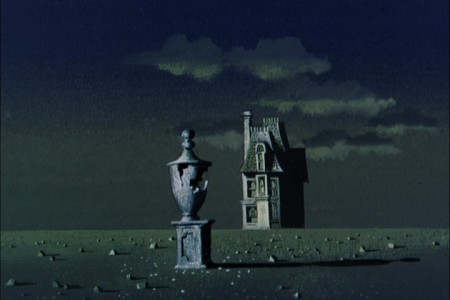 1
1
Animation &Commentary &Independent Animation 22 Jul 2013 04:25 am
A Friend in Lou
- I’ve been thinking a lot about my friend, Lou Scarborough, this past week. So why not write about him? That’s what I’m going to do. Just random thoughts, good and bad, I guess. All just random. I’m sure I’ll have other posts to add to this, eventually.
I met Lou years ago the same way I met a whole core of NY friends and folk.
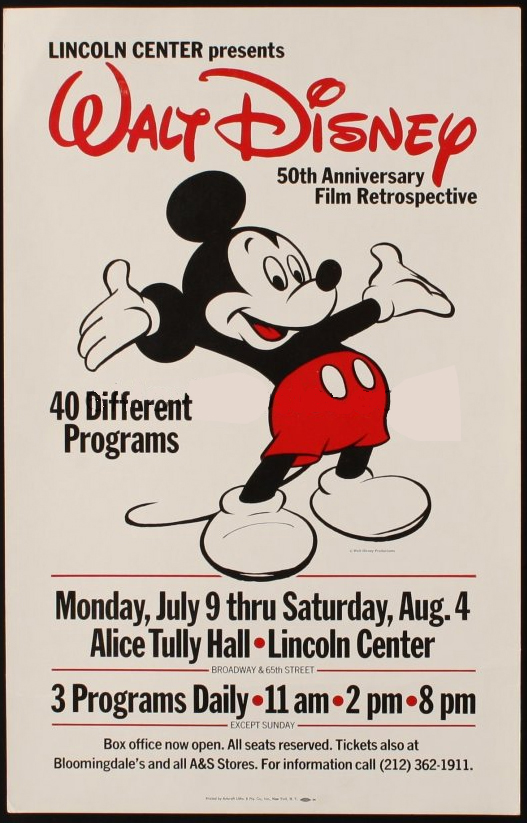 Back in 1978, Disney celebrated the 50th anniversary of Mickey Mouse’s creation. History for a lot of us – I mean, here, the celebration not the creation. The MoMA had a retrospective of all 50 years of Mickey cartoons in chronological order. They started with a bunch of silent Alice in Cartoonland followed by Oswald the Rabbit cartoons. They were shown silent. I mean SILENT – no audio, not even an organ. They ended that first program with Steamboat Willie. Now there was the invention of sound. You could hear it, you could feel it, you knew a new era had begun. Soundies.
Back in 1978, Disney celebrated the 50th anniversary of Mickey Mouse’s creation. History for a lot of us – I mean, here, the celebration not the creation. The MoMA had a retrospective of all 50 years of Mickey cartoons in chronological order. They started with a bunch of silent Alice in Cartoonland followed by Oswald the Rabbit cartoons. They were shown silent. I mean SILENT – no audio, not even an organ. They ended that first program with Steamboat Willie. Now there was the invention of sound. You could hear it, you could feel it, you knew a new era had begun. Soundies.
Up at Lincoln Center, they were showing all the feature films, animated as well as live action films. Things like Pollyanna and Treasure Island as well as Lady and the Tramp and Dumbo.
The best part, though, was around the corner, daily, at the Library of the Performing Arts. Speaker/Guests included Animators: Frank Thomas, Ollie Johnston, Woolie Reitherman, Designer: Eric Anderson, and John Culhane moderated a bunch of it. They showed clips of a lot of the feature animated films; they told famous stories for the millionth time, they told stories we hadn’t heard before. (e.g. Reitherman wanted the disco ball and the changing colors as the cats of the Aristocats played jazz in the attic. His was not something others wanted in the film. The director got what he wanted including a lot of reuse animation. Reitherman learned something about Xerography other than inking stories during 101 Dalmatians.
Anyway, to get into this series of programs (I’m sure there were four of them) you’d sit on the ground in the hot sun waiting for the doors to open when they handed out tickets. I was working for John Hubley at the time. A lot of the others: Dan Haskett, Tom Sito, Pat Sito, John Lopez, Kevin Petrilak, Bob Lusk, and, of course, Lou Scarborough, all worked at a place called Tele-Tactics where they were paid horrible wages as animators working on something called The Days of Liberty.
Over time, a lot of those people went to Raggedy Ann in a direct route uptown once that studio opened. I was teh first hired there, so I got to watch the influx as animation began.
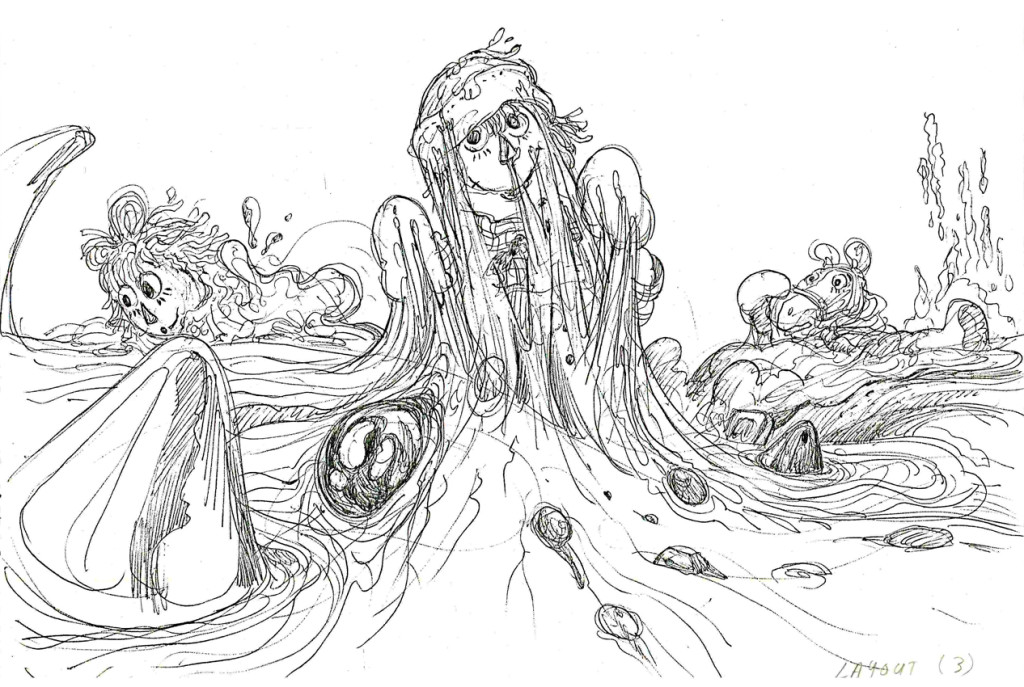
Lou went with a whole group directly into the Taffy Pit to clean up and inbetween the elaborate and gutsy drawings of the master, Emery Hawkins. Exhausting work but they were all friends and had a group all their own during Raggedy’s world. A new era of sorts had begun – the taffy pit folk. Ultimately, they all moved out to LA, worked at Disney for a bit and at a bunch of other feature studios for a bit.
- I also remember during the late 70′s and early 80′s that Lou Scarborough was closely involved with Wendy and Richard Pini‘s fantasy characters from Elf Quest.
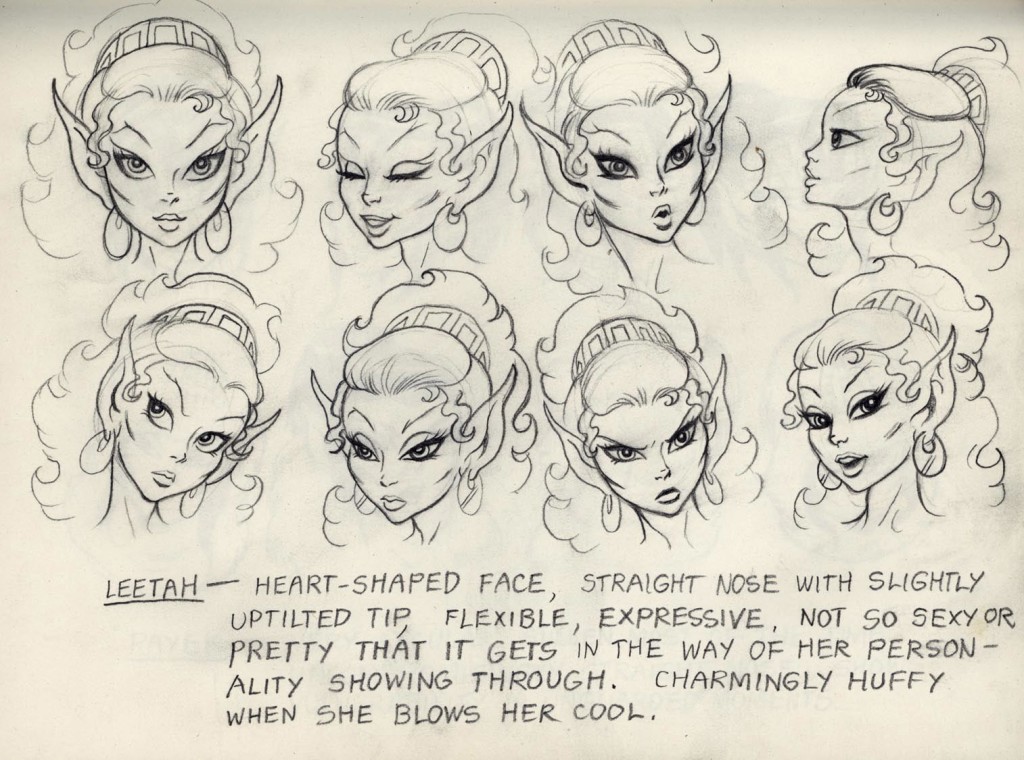
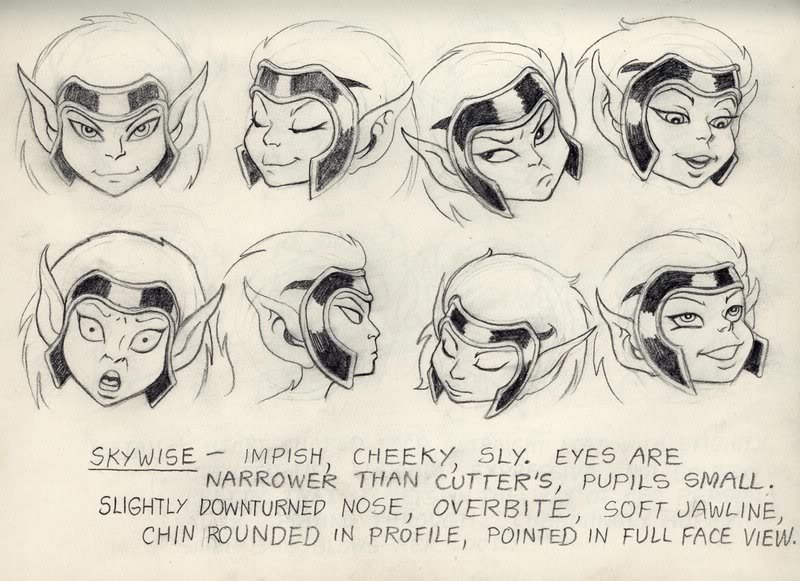
A sample of the Elf Quest art
Along with Dan Haskett and other friends he helped build model sheets and tried desperately to get the comic books animated. I don’t believe much happened with the work, especially after it moved to cgi. In my opinion it lost any magic it had in the 2D cartoon drawings and completely lost everything in the clumsy cgi artwork.
In a way, it seems to me that this art style seriously affected Lou. Though I was certainly not a fan, I did appreciate the hard work all the artists did in putting it together. The whole enterprise, though, seemed like too many other fantasy pieces that were out there.
Lou was one of the last to leave New York City for the West Coast. He did a couple of jobs for me before he left. There were some Sesame Street spots, dances, that he animated. Then there were a couple of episodes of a show called Brain Games done before Sheila Nevins moved in and took over at HBO. I did about 45 minutes of the six half hour shows Sheila produced with Jeff Schon as co-producer. . It was all fun work. Lou animated a centurian and oddly he had the guy move wildly from the forth pose to the fifth. There was an enormous surprise when this character moved, so traditionally drawn, and moved beautifully. The large
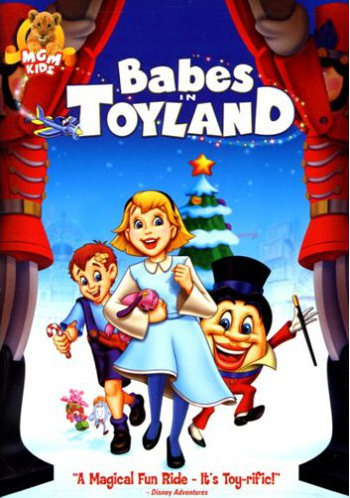 arc worked for the character and found me imitating Lou’s move more than once in future scenes. A peculiar layout that worked so well. I was the only one who noticed it and the only one who worried about it. No problema, it worked.
arc worked for the character and found me imitating Lou’s move more than once in future scenes. A peculiar layout that worked so well. I was the only one who noticed it and the only one who worried about it. No problema, it worked.
Lou moved to LA and worked on various business out there. He did a number of MGM musicals for home video. Things like Babes in Toyland, The Quest for Camelot, as well as The Adventures of Sonic the Hedgehog.
In the end, Lou ended up without money but still a lot of dreams. Now he’s fighting cancer in a hospital at a young age. Life’s tough, and I’m watching my friend closely. I hope his luck gives him a couple of good breaks.
Commentary 20 Jul 2013 10:59 am
POV of Me
I owe many thanks to Garrett Gilchrist (as a matter of fact, we all do) for all the work he’s done in saving and restoring the archives of Richard Williams. Now I find that he’s located a copy of the short THE SAILOR AND THE DEVIL which Williams had Erroll LeCain animate, color and completely create singlehandedly while working for the studio in those early days at 13 Soho Square. Gilcrhrist notes that the last seconds of the short are missing, so we’re still short an ending, but there’s a lot there just the same. So enjoy.
In the first script of the first episode of The Soparanos Tony spends much of the time on the therapist’s couch (so to speak – he’s actually in a chair across the room from Dr. Melfi). There he starts to describe himself as one of the last who were in on the beginning of something. He knows he’s the last of the breed to have respect for the “job” he’s been trained to do, and for this he “mourns” the workout for the future of this “business.” Christopher, his nephew, he’d point out, has no respect because he cme in when it was much-too-easy to play at this career.
The lines, as I heard them, could have come from most professional animators talking about their line of work. It isn’t long before we see what Tony was talking about.
I recently saw Monsters University in an Academy screening. During the post film discussion I go ina very short discussion of how little I enjoyed the film and found myself, a party of one, discussing my thoughts.
Within days I couldn’t remember ANYTHING about the Pixar film. It was as though I hadn’t seen it; at least I couldn’t rmember aby of. No gestures, no gags, no animation, no design, nothing. I could not remember much about the film. For this reason, I was glad when Pixar offered Academy members a second chance. Any Monday to Thursday to screening we were allowed to come and see the film with a guest. I decided it was only fair to give Pixar and their artists that second run. I went to see it again.
My memory wasn’t wrong, I found out. I still disliked it. Though Heidi loved it I was completely apathetic to the allure of the movie. I felt it was like watching an excellent animated show made for TV. Nothing in the movie was better than anything done for the small screen. The animation was up to the best cgi standards, the design was equal to Monsters Inc., the first film.The characters, in that first film, had already been developed as far as Pixar would take them. The gags had already played out and there was nothing new offered in the second film. It had already become a generic film, and there was nothing new to ffer me. I felt this on my first viewing and felt the same even more harshly in that second screening. (I did like the way one of the creatures moved, but even that grew stale.) It was like watching yet another of those Donald and Ranger cartoons from the 1950′s. Nothing new in any of the shorts. All perfectly professional; all totally boring.
For the same reason, I’m looking forward to seeing Despicable Me 2. Is there anything new, better, original in this second film? We’ll see. Maybe I’ll get to laugh at least once?
I apologize to those of you who loved Monsters University. However, if you enjoyed it, I’m glad. That’s all you should want from a film. I just wish I had enjoyed it more.
Action Analysis &Animation &Animation Artifacts &Commentary &Disney &Frame Grabs 15 Jul 2013 06:40 am
Mickey’s Service Station Grabs
- Having posted sketches from Mickey’s Service Station, the brilliant 1935 short, the last B&W Mickey film, the next thing for me to do, logically, is post frame grabs from the final film – for comparison.
Since Hans Perk has made available the film’s draft on his incredibly resourceful site, AFilmLA, I’ve also added the animators’ names to the frame grabs. What an assortment it is, too. Art Babbitt, Eric Larsen, Bill Tytla, Jack Kinney, Don Towsley, Fred Spencer, Milt Kahl, Ferdinand Hovarth, Archie Robins among others.
Here, then, are the scenes from the film:
 1
1(Click any image to enlarge.)
Commentary 14 Jul 2013 01:10 am
For Lou
For Lou, whenever it’ll happen.
These days are his.
Tom Sito wrote: Yvette Kaplan and I visited with Lou Scarborough today
and spent time with him, Mark, and Lou’s brother Cecil.
Lou was alert but weak. He could not speak because of the respirator, but
he recognized us and understood what we were saying to him.
I felt that if he did not have the respirator
he might have been able to speak.
We chatted about Art&Design, Teletactics, Raggedy Ann
and the upcoming Comicon, and he understood it all.
Cecil said the cancer is in his prostate, colon, liver and now the lungs.
We left when they were about to take him off the respirator.
If he can breathe on his own, they will move him from the ICU to
a Hospice Care. We helped him complete his Will.
I joked that we were signing him into the Foreign Legion with Pepe LePew,
and I could see in his eyes he understood and was smiling.
This Hospital is a Charity Hospital, so no one spoke of money.
It is a nice facility. Jerry Beck and I have ASIFA and
the U-nion ready to fundraise should he need it.
We did not stay to see the results of his having his respirator turned off.
I trust Mark or Cecil will contact us with any future news.
If there is more, I’ll pass it on.
From BARRY CALDWELL later Sat.
I arrived at Lou’s bedside a little while after Tom left
and was present when they removed the breathing tube.
As Tom wrote, he was alert but weak. Fortunately, he was
able to breathe well on his own and spoke a little. He was
advised to rest in general and especially his vocal chords,
so my visit was very short.
Barry
Thanks, Tom, Barry and others, for sharing the information. It’s sad
for all of us who loved Lou during his short complicated lifetime.
Thanks to Steve Fisher for the use of his photos.
